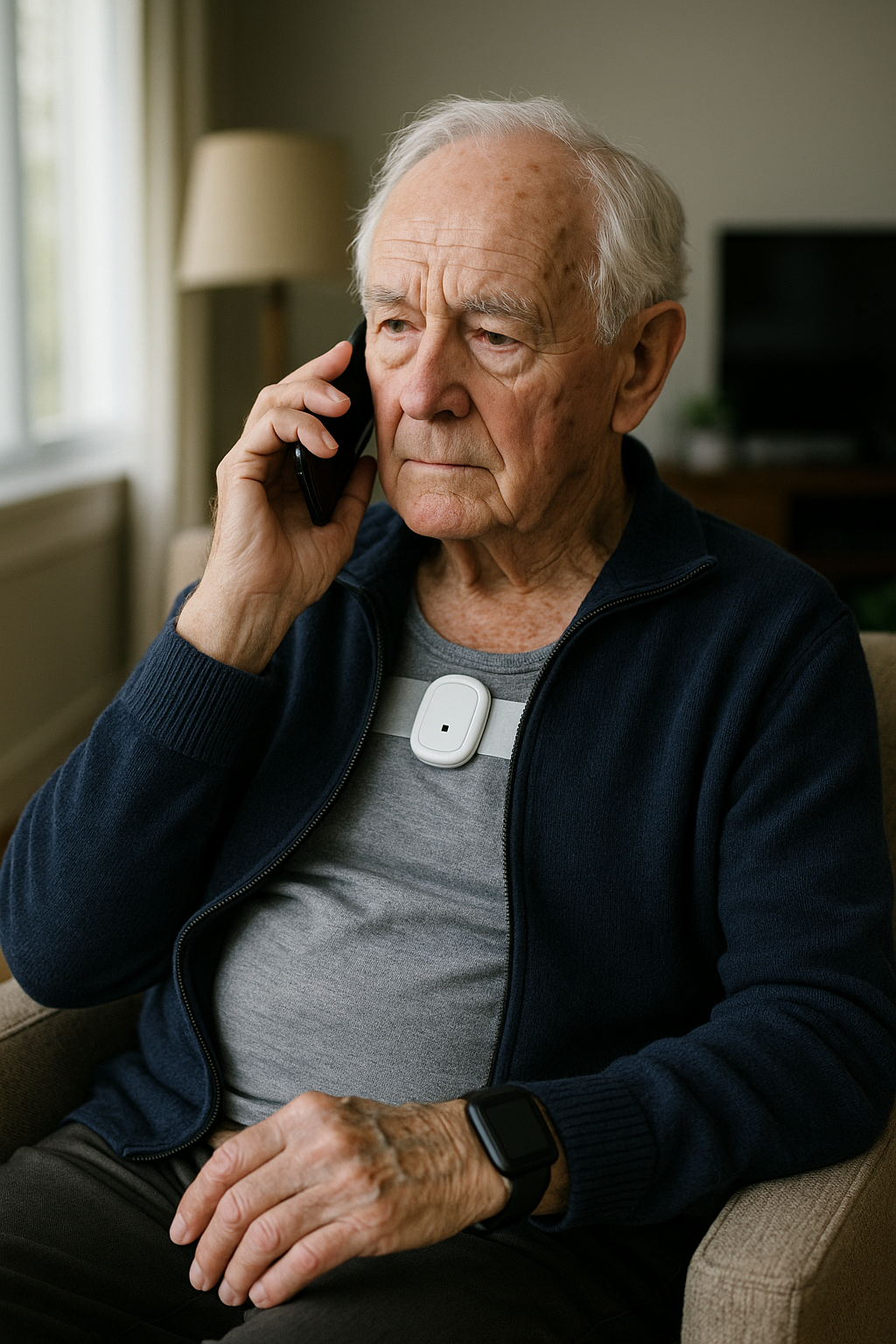From early detection to advanced care: How IoT is reshaping Alzheimer’s management
Researchers found that digital biomarkers, mobile-based cognitive testing, and speech analytics are emerging as powerful tools for the early detection phase. Smartphone-based memory assessments and language analysis platforms have demonstrated reliable accuracy in distinguishing between mild cognitive impairment and early-stage Alzheimer’s, achieving strong sensitivity and specificity scores in multi-center clinical evaluations.

A new systematic review highlights how artificial intelligence (AI) and Internet-of-Things (IoT) technologies are rapidly transforming the diagnosis, monitoring, and care of individuals living with Alzheimer’s disease (AD).
The research, titled Stage-Wise IoT Solutions for Alzheimer’s Disease: A Systematic Review of Detection, Monitoring, and Assistive Technologies, was published in Sensors in 2025. It provides a critical analysis of 236 studies conducted between 2020 and 2025, offering a structured roadmap for integrating connected devices and smart systems across all stages of the disease.
Revolutionizing early detection of Alzheimer’s
The study calls for early and accurate diagnosis of Alzheimer’s disease to slow progression and improve outcomes. Researchers found that digital biomarkers, mobile-based cognitive testing, and speech analytics are emerging as powerful tools for the early detection phase. Smartphone-based memory assessments and language analysis platforms have demonstrated reliable accuracy in distinguishing between mild cognitive impairment and early-stage Alzheimer’s, achieving strong sensitivity and specificity scores in multi-center clinical evaluations.
The integration of wearable biosensors is also redefining how clinicians can remotely monitor patients during the preclinical stage. Innovations such as eye-tracking technologies have achieved accuracy rates exceeding 85% in distinguishing cognitive decline markers. Additionally, Bluetooth-enabled biochemical platforms capable of detecting biomarkers like Aβ40/42 and tau proteins in blood or sweat samples at sub-picogram levels are emerging as promising, portable diagnostic tools.
These advancements, the authors note, are setting the stage for more personalized care strategies. The combination of AI-driven analytics with IoT-enabled sensing allows for continuous, non-invasive tracking of subtle cognitive changes, offering unprecedented opportunities for earlier interventions that could improve long-term outcomes.
Transforming daily management and risk monitoring
For individuals in the mild and moderate stages of Alzheimer’s disease, the review highlights how IoT solutions are transforming daily life by supporting independence and enhancing safety. Wearable devices, ambient home sensors, and integrated activity trackers are enabling comprehensive monitoring of daily activities, medication adherence, and early signs of risk events such as falls or wandering.
Fall detection technologies are at the forefront of this innovation. Systems incorporating waist-mounted inertial measurement units combined with deep learning algorithms are delivering near-perfect accuracy, while pressure-sensing insoles linked to machine learning models provide actionable data for predicting fall risk with high specificity.
Sleep and circadian rhythm monitoring are also proving critical for effective disease management. The study found that wearable and non-contact sleep monitoring devices are offering valuable insights into disrupted sleep patterns, which are increasingly recognized as early indicators of cognitive decline. However, the authors emphasize the importance of validating these tools against clinical gold standards to ensure their accuracy and reliability in real-world use.
These technologies are not only supporting patient safety but also reducing caregiver burden. Real-time data streams and predictive alerts allow caregivers and healthcare providers to respond swiftly to emergencies, optimizing care delivery while preserving patient autonomy for as long as possible.
Redefining support in advanced stages
As Alzheimer’s progresses to advanced stages, the role of assistive and safety-focused IoT solutions becomes even more critical. According to the review, smart-home systems equipped with automated lighting, adaptive temperature controls, and secure medication dispensers are improving safety and reducing confusion for patients with severe cognitive decline.
GPS-enabled wearables integrated with geofencing technologies are also proving invaluable in preventing dangerous wandering incidents. These systems send real-time alerts to caregivers when patients cross predefined boundaries, significantly reducing response times and improving patient safety.
Moreover, caregiver support systems are emerging as essential components of advanced-stage care. By integrating continuous monitoring with intelligent alerts and data visualization dashboards, these platforms allow caregivers and clinicians to coordinate interventions efficiently, reducing stress and enhancing quality of life for both patients and their families.
For these advanced solutions to reach their full potential, they must be coupled with user-friendly interfaces and tailored to the specific needs of both patients and caregivers. Human-centered design and clinical co-development are key to driving adoption and ensuring sustained engagement with these technologies.
Challenges and future directions
While the study identifies significant progress, it also outlines critical challenges that must be addressed to realize the full promise of IoT-enabled Alzheimer’s care. Clinical validation remains limited, with many promising technologies yet to undergo rigorous, longitudinal testing in diverse, real-world settings.
Data privacy and regulatory compliance are also pressing concerns. Continuous monitoring generates vast amounts of sensitive health data, raising complex issues around consent, data minimization, and adherence to regulations such as GDPR and HIPAA. Ensuring security while maintaining usability will be central to scaling these systems globally.
Interoperability is another major barrier. Fragmented device ecosystems and proprietary data formats hinder seamless integration with electronic health records and care management platforms. The authors call for global standards to facilitate interoperability, reproducibility, and cross-platform compatibility.
The review also highlights disparities in access to these technologies, particularly in low- and middle-income countries where broadband connectivity, device affordability, and digital literacy remain significant obstacles. Addressing these inequities will be critical to ensuring that the benefits of IoT and AI reach the populations most in need.
For future work, the authors point to the integration of edge computing, federated learning, and multimodal digital twins as promising areas of innovation. These advances will enable more personalized, privacy-preserving, and scalable solutions for Alzheimer’s care. By aligning technological innovation with human-centered design and clinical best practices, the next generation of IoT solutions promises to transform care delivery across the Alzheimer’s disease continuum.
- FIRST PUBLISHED IN:
- Devdiscourse










